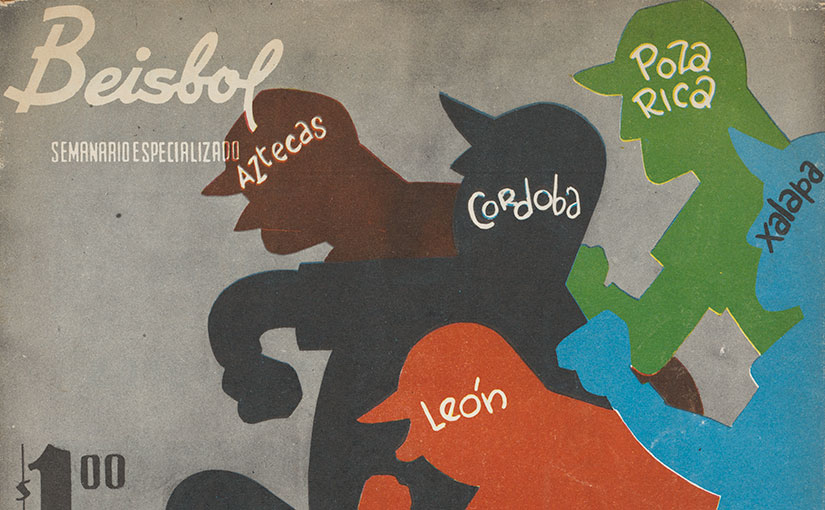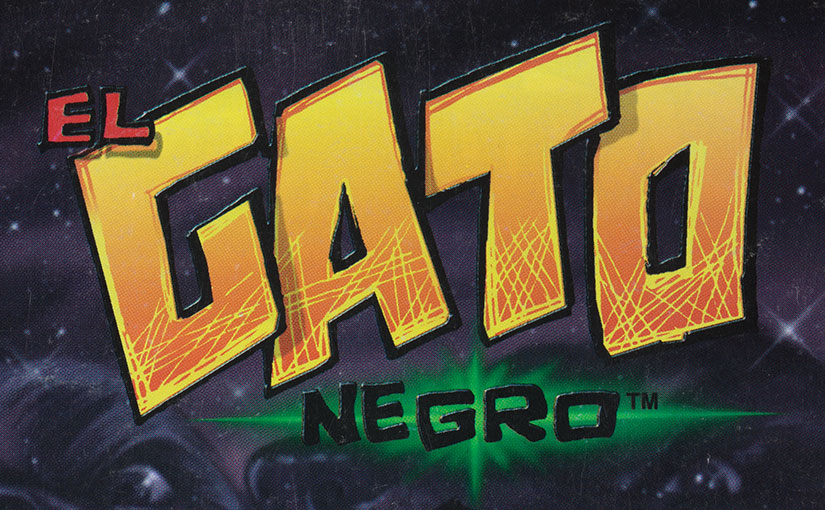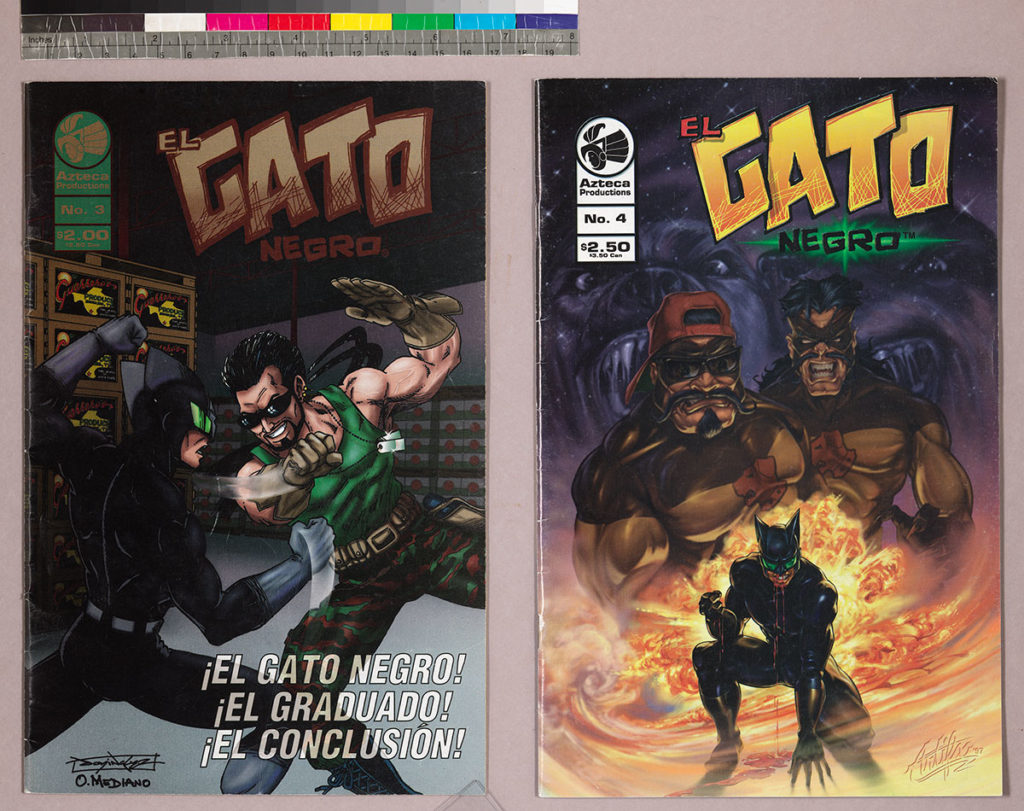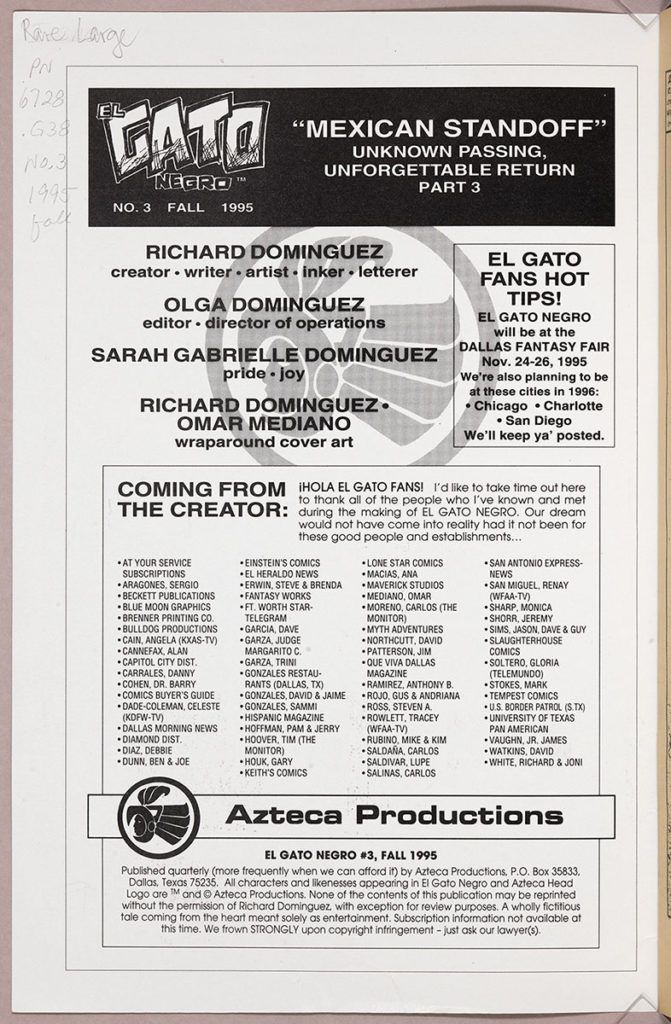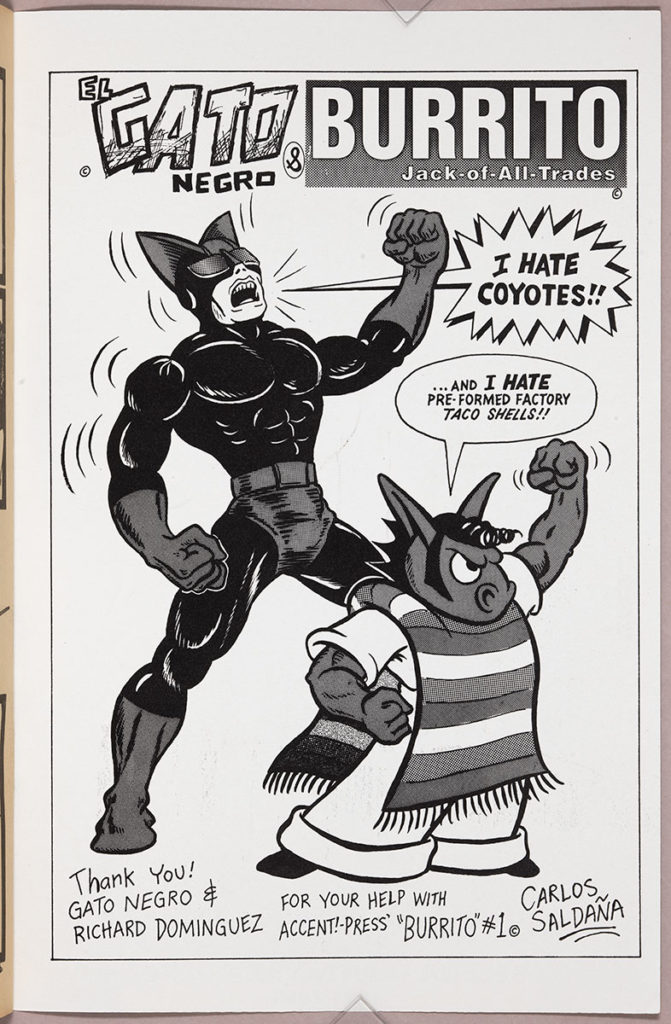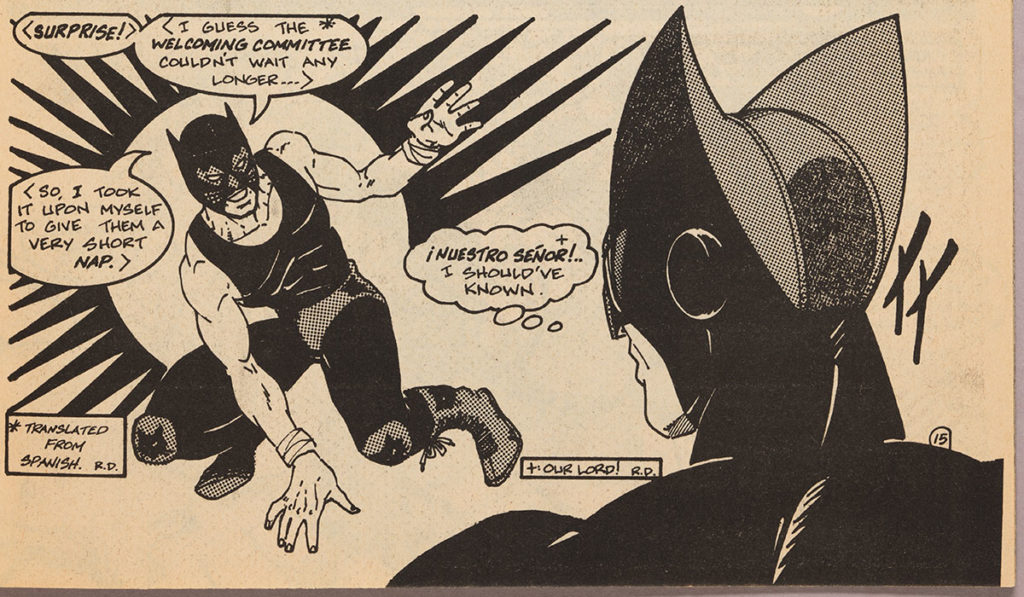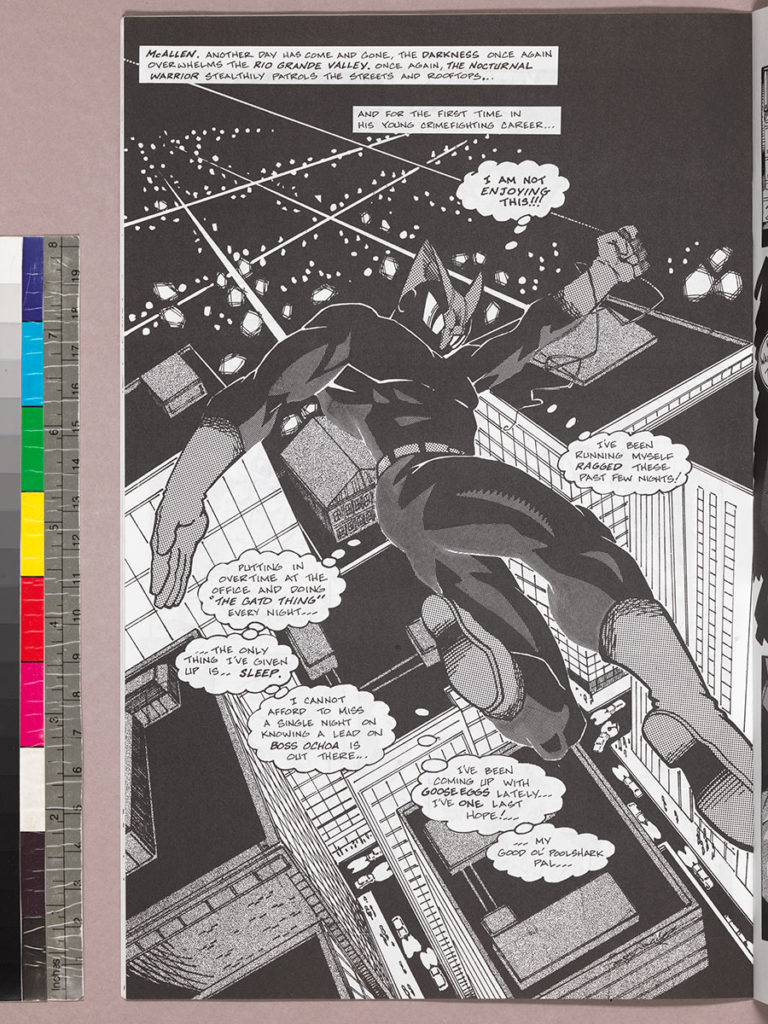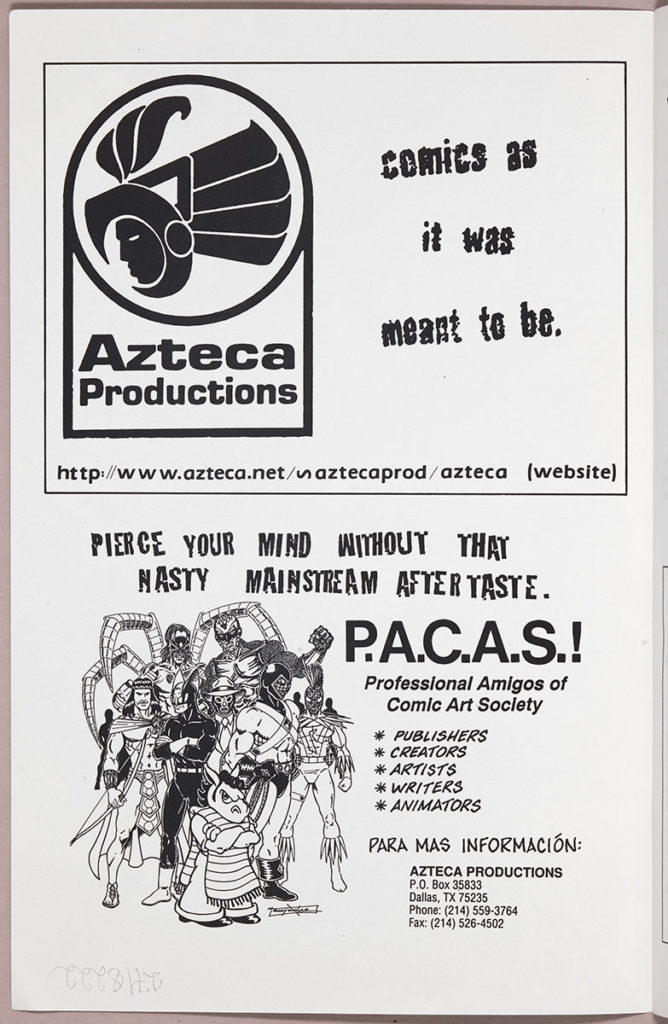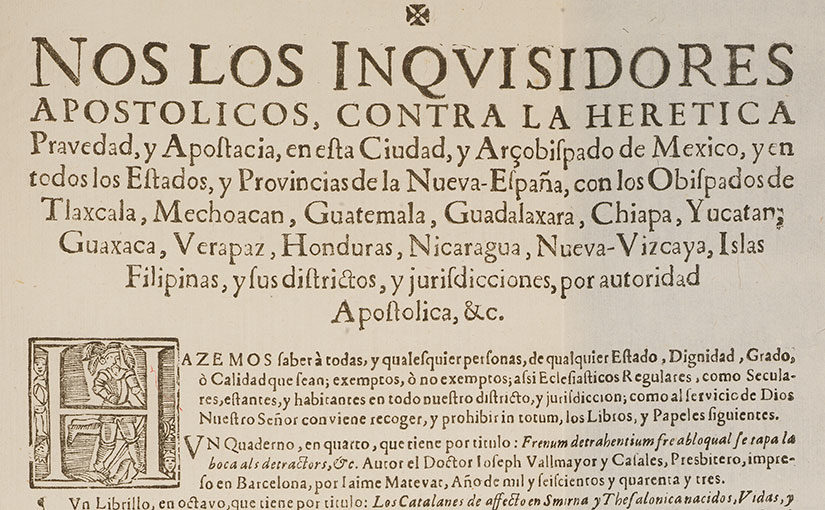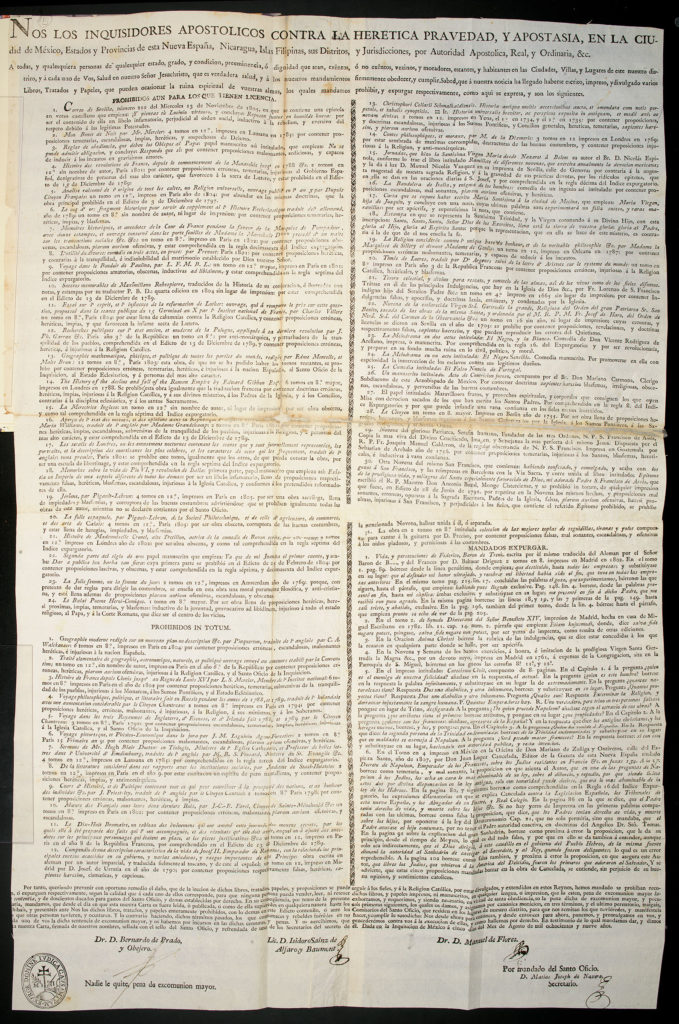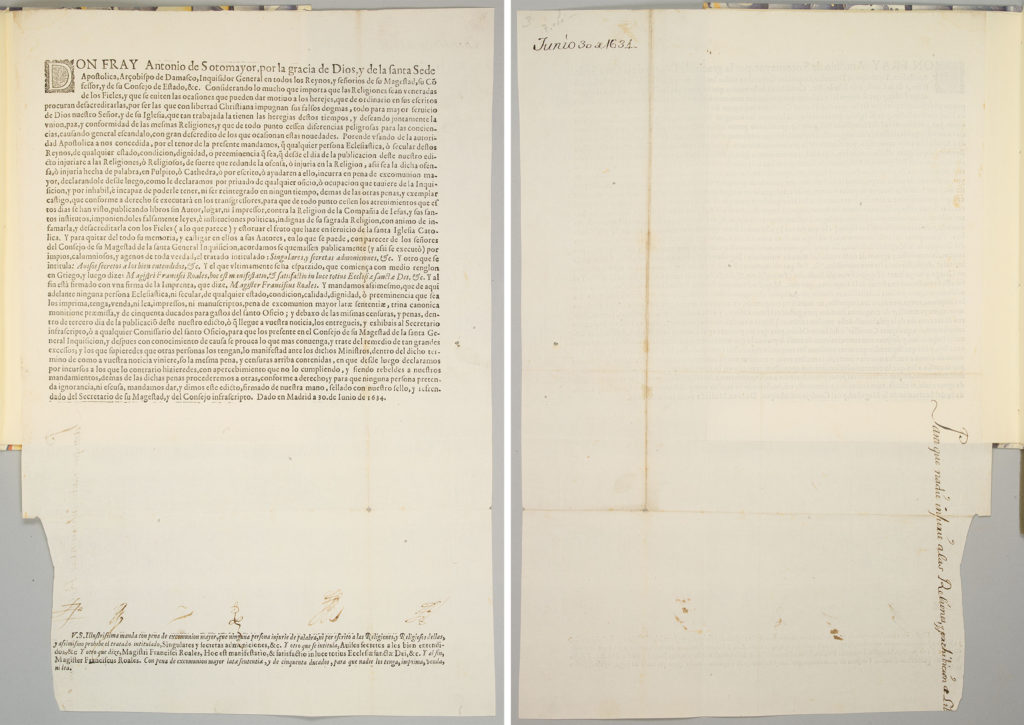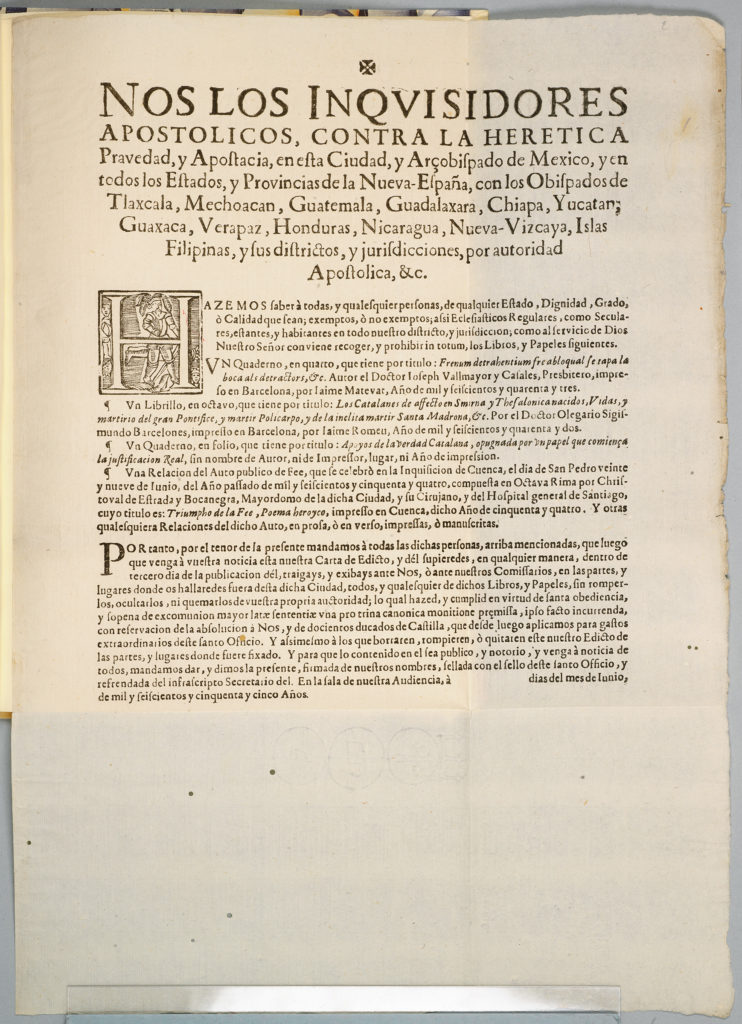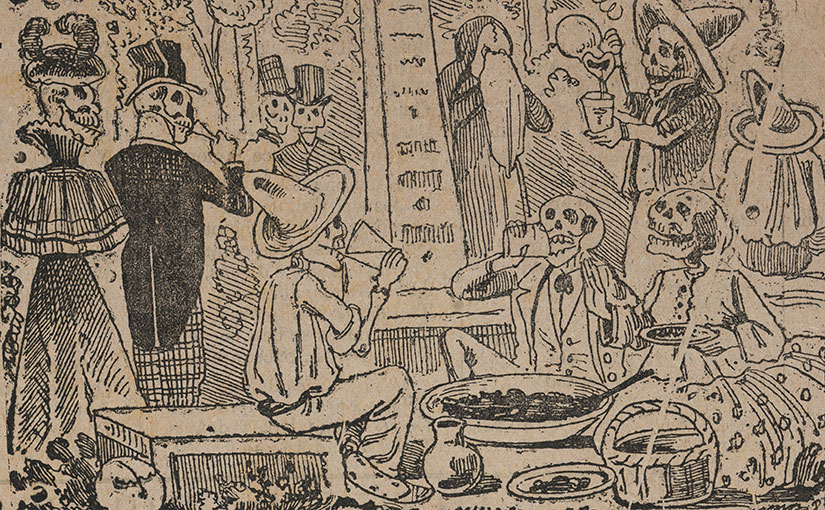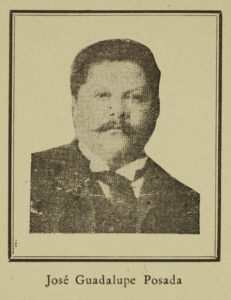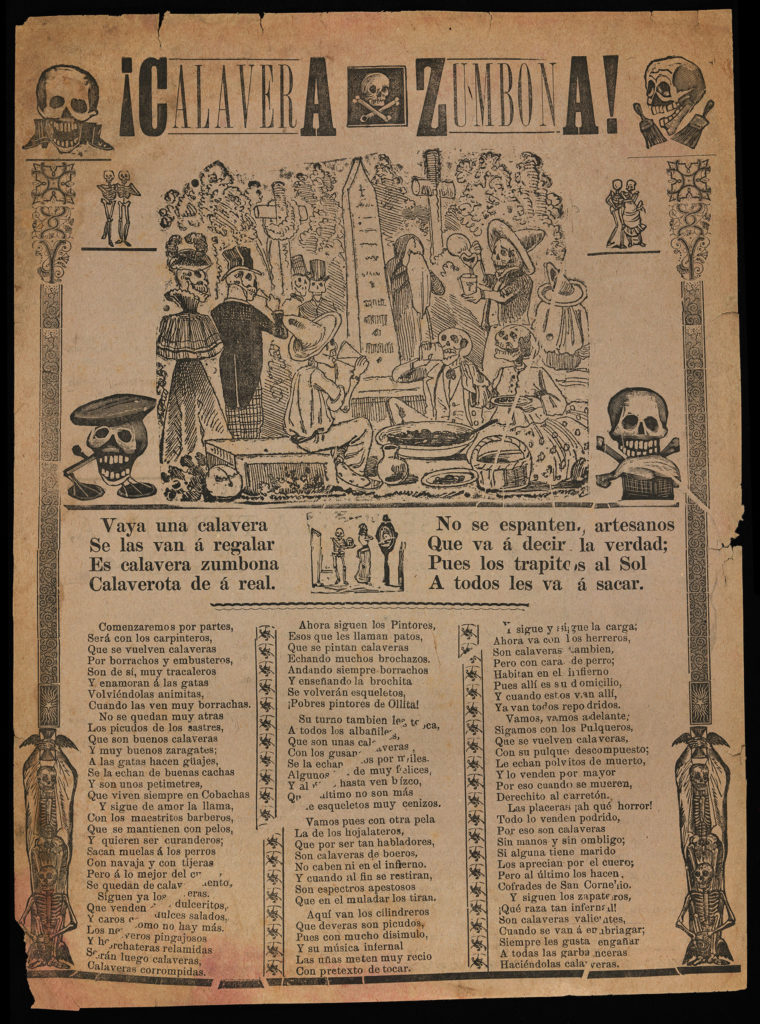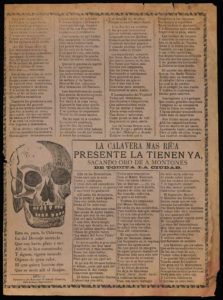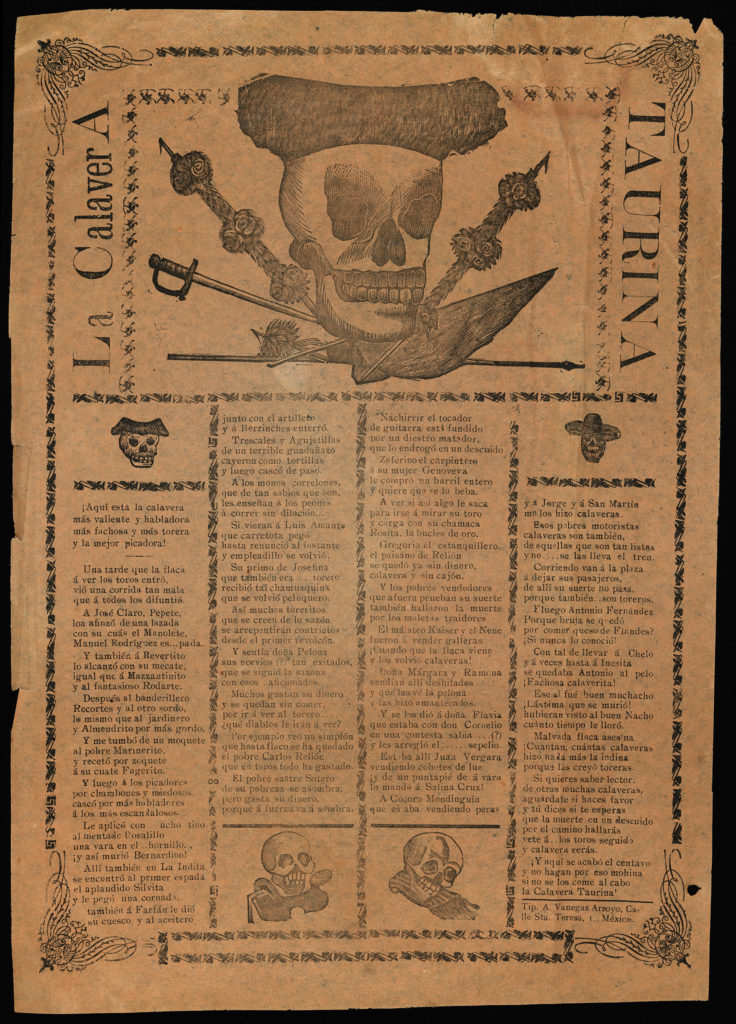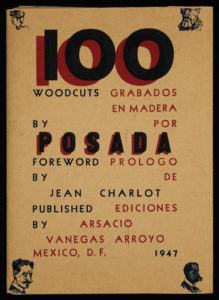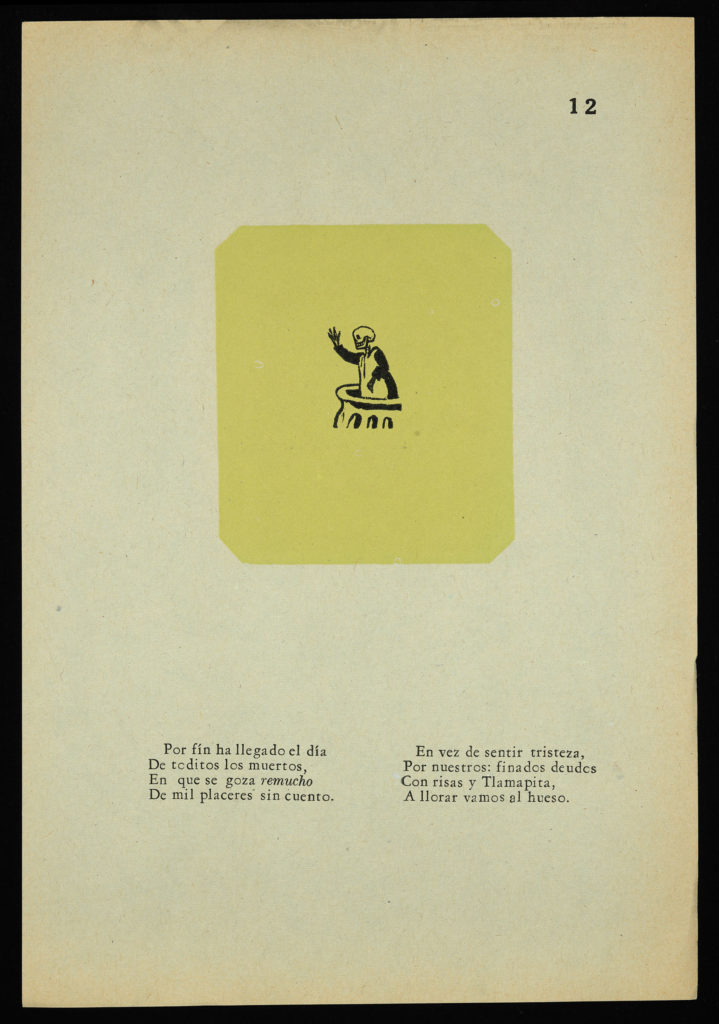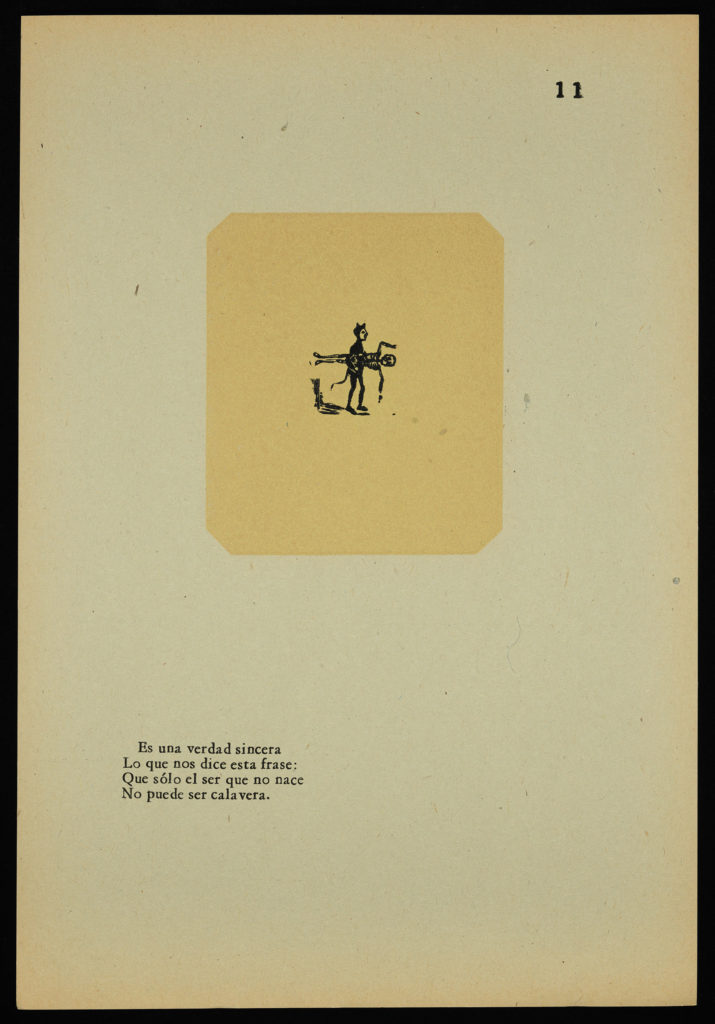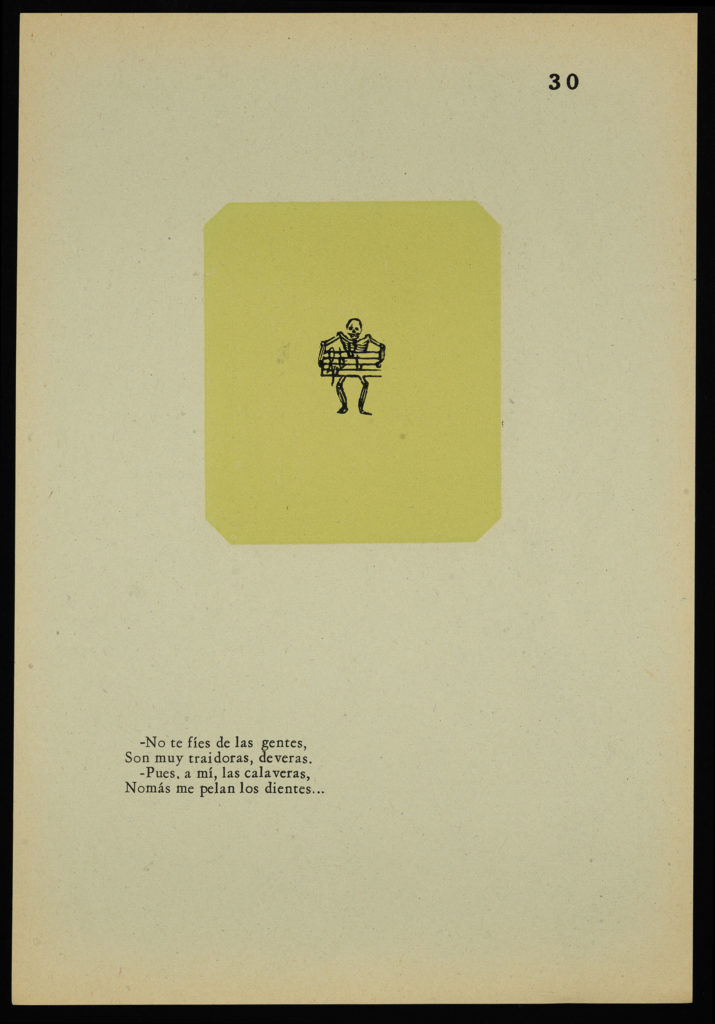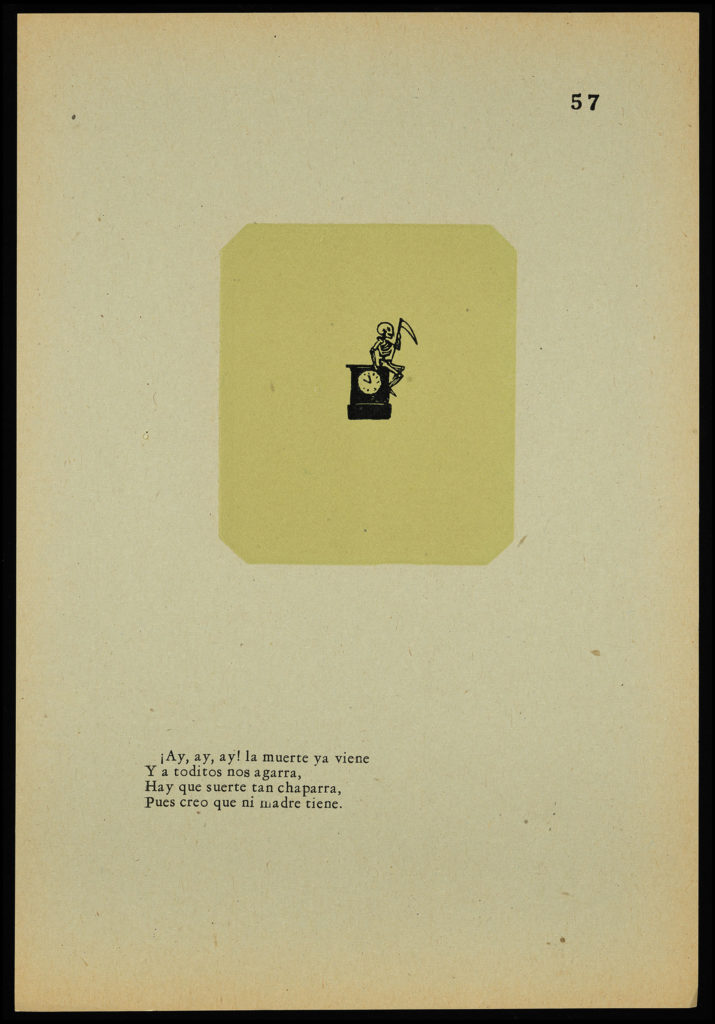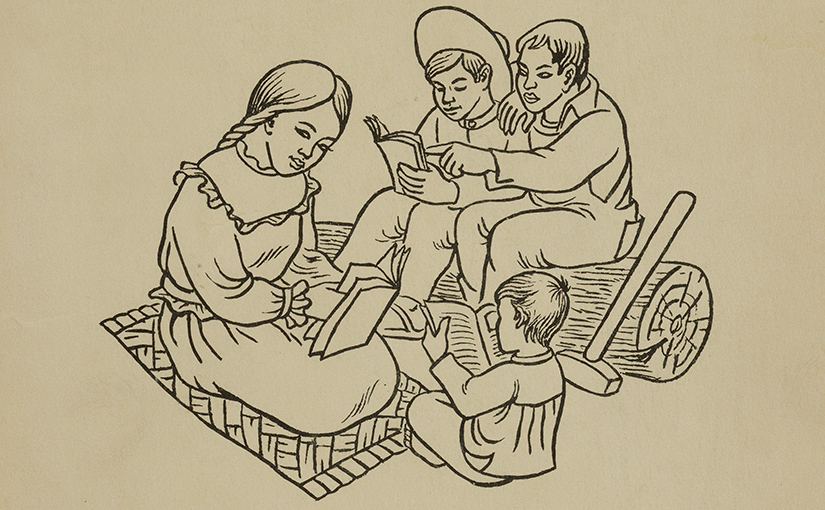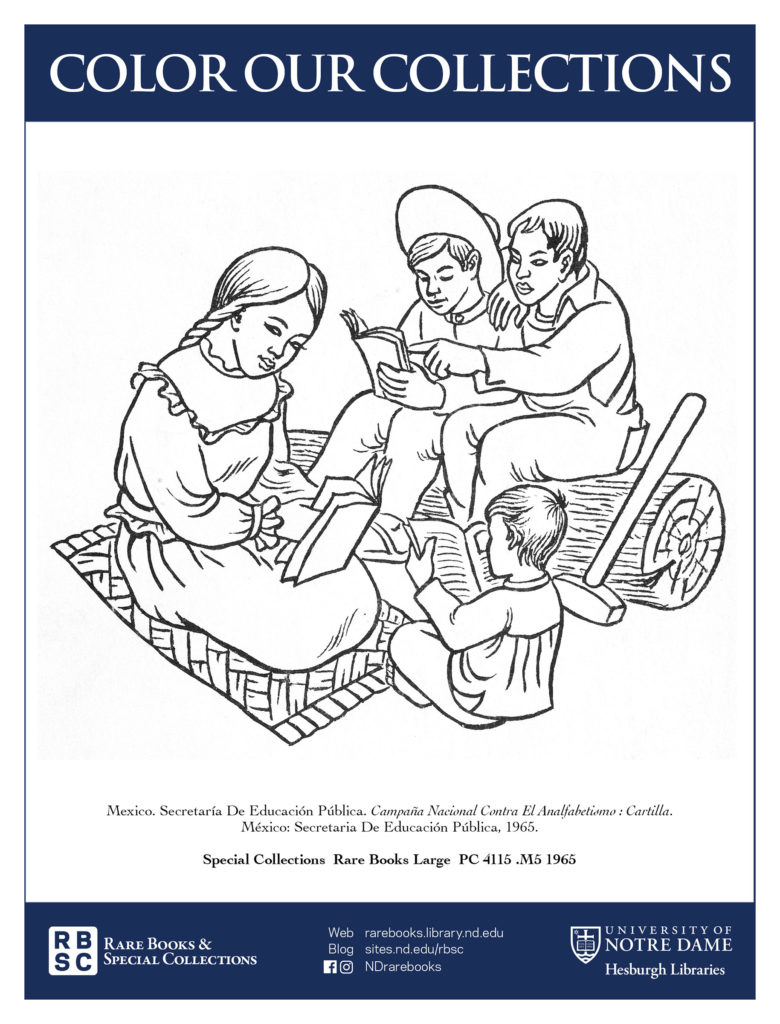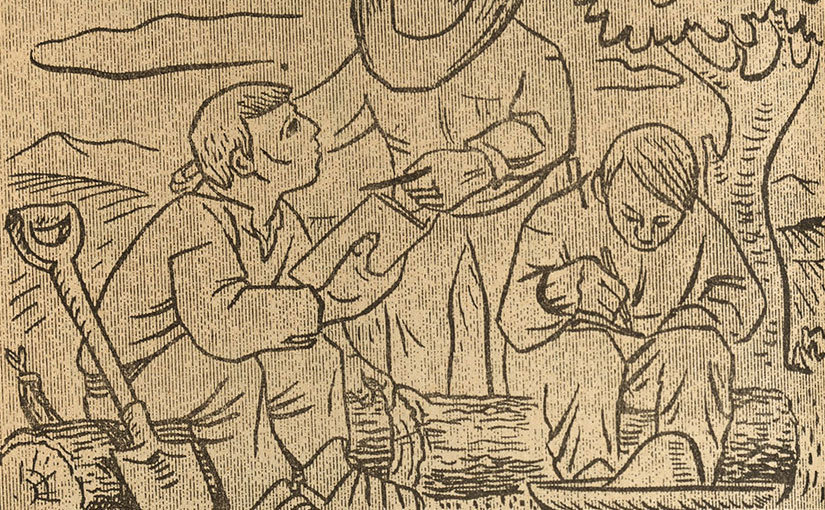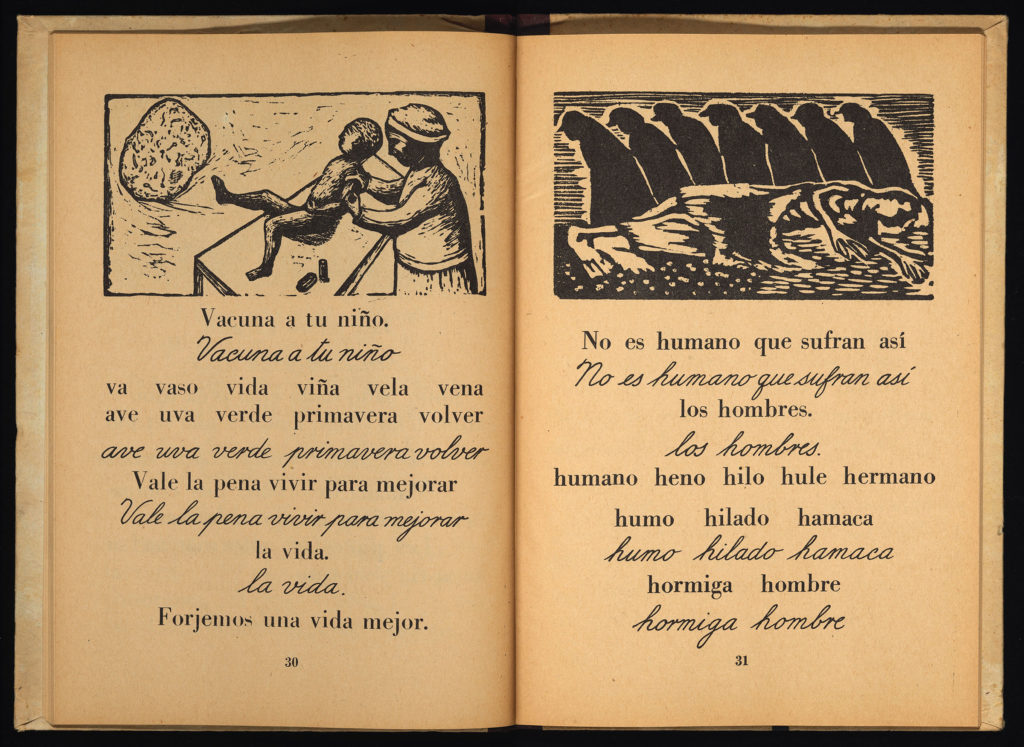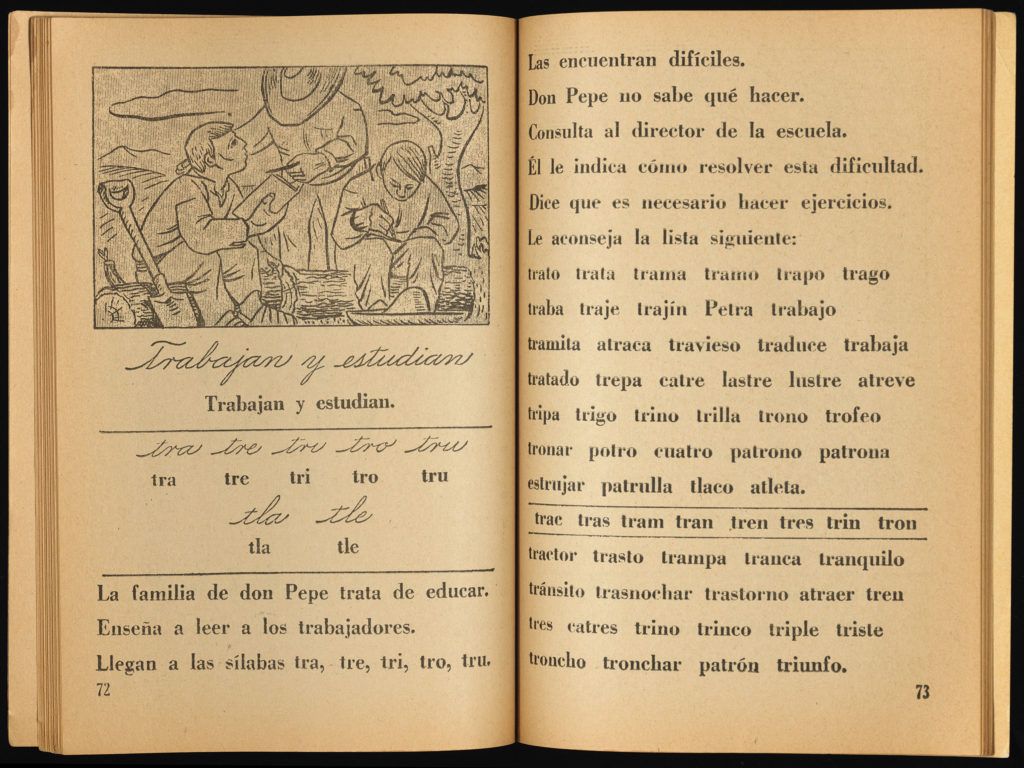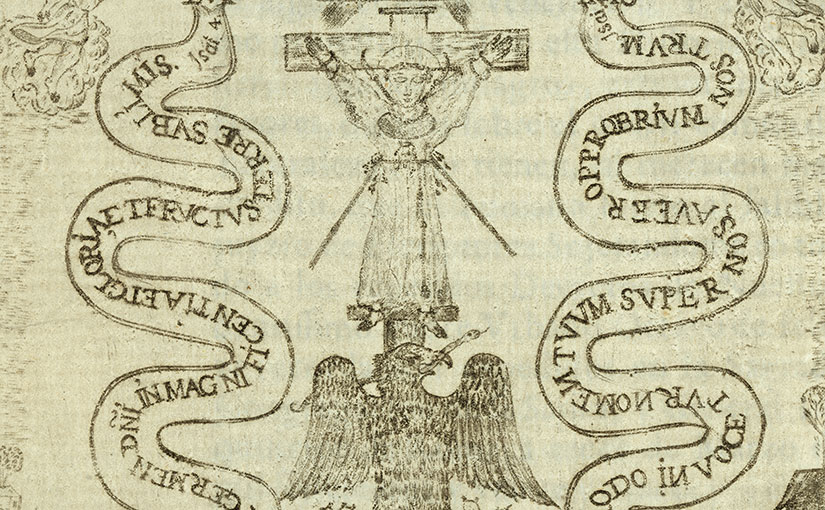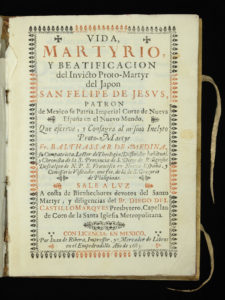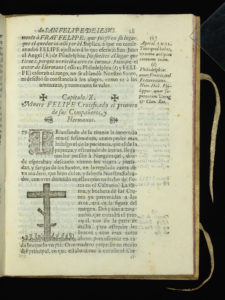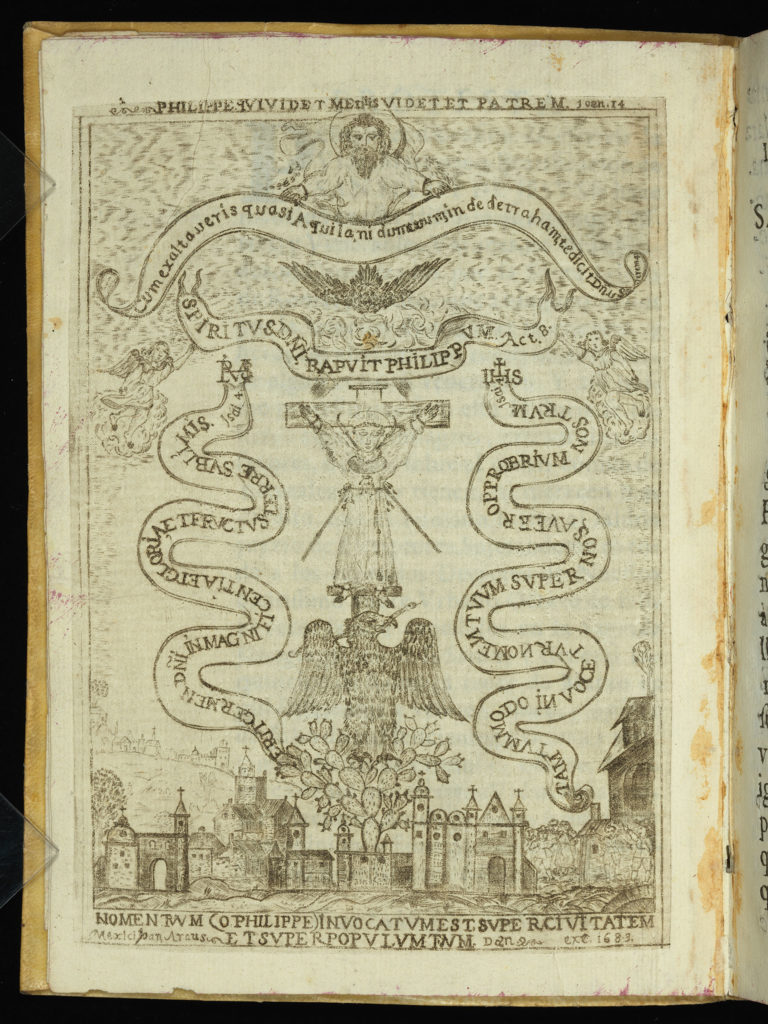We join the Library of Congress, National Archives and Records Administration, National Endowment for the Humanities, National Gallery of Art, National Park Service, Smithsonian Institution, and United States Holocaust Memorial Museum in celebrating National Hispanic Heritage Month.
Reading Beisbol: Semanario Especializado
by Greg Bond, Sports Archivist and Curator, Joyce Sports Research Collection and Payton Phillips Quintanilla, Latin American & Iberian Studies Librarian and Curator
“Todas las competencias deportivas, no solamente las internacionales o las interestatales, sino también las interpoblaciones, deben servir para estrechar los lazos de amistad y nunca para distanciar a los pobladores o fanáticos.”
“All sporting competitions, not only international or interstate ones, but also local ones, should serve to strengthen the bonds of friendship and never to distance the residents or fans.”
The September 3, 1953, issue (page 1) of the Mexico City-based magazine Beisbol: Semanario Especializado (Baseball: Weekly Special) published this article lamenting the increasingly bitter and antagonistic rivalries between baseball teams and spectators in Mexico. The editors encouraged their readers to find common ground through sports and urged fans to temper their intensity.
The magazine did acknowledge the centrality of fan participation during baseball games, but it urged moderation in cheering:
“Un encuentro de beisbol sin gritos ni alaridos, es como una cerveza sin espuma; ésta es indispensable para que la cerveza se apetezca… pero tampoco gustará usted de tomarse una cerveza que sea pura espuma.”
“A baseball game without shouts and screams is like a beer without foam; the foam is essential for the beer to be appetizing… but you would not like to drink a beer that is pure foam.”
The editors concluded dramatically: “… después de un encuentro beisbolero, cuando se haya disipado el olor de la pólvora, los contrincantes deben darse la mano y seguir siendo amigos.” (“…after a baseball game, when the smell of gunpowder has dissipated, the opponents must shake hands and continue being friends.”)
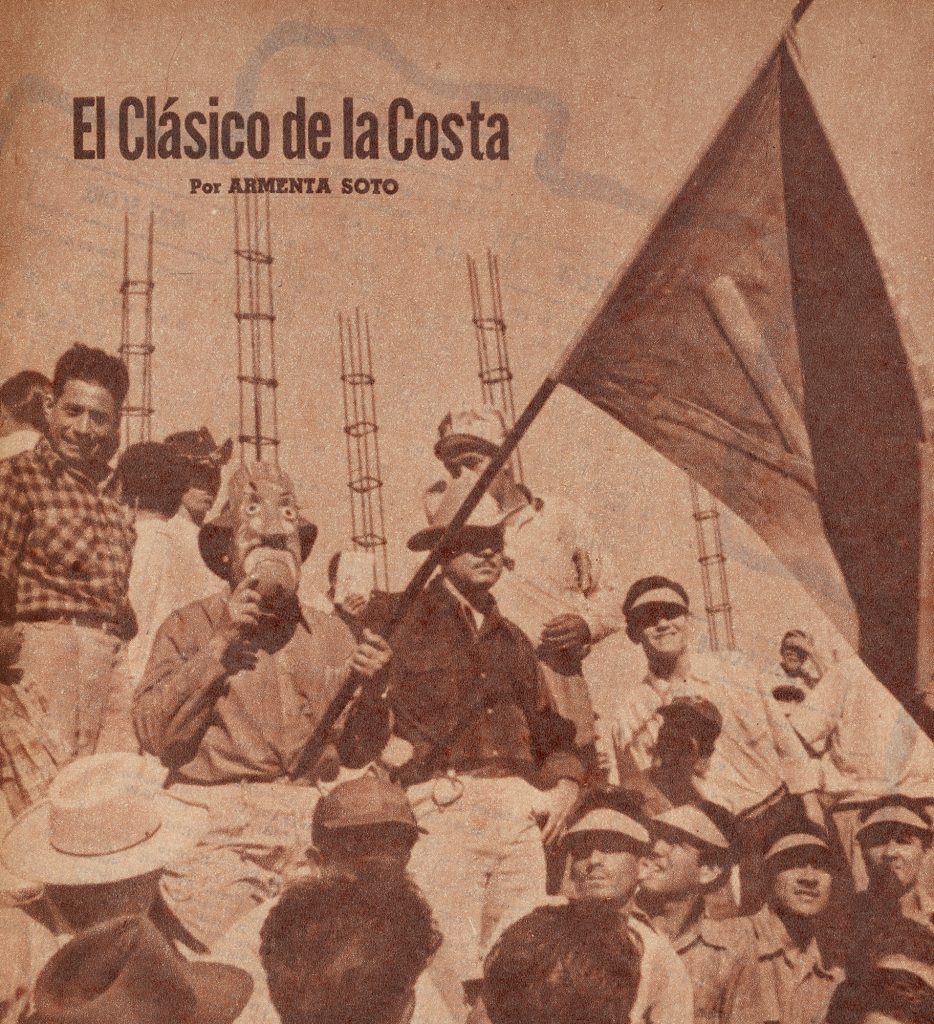
Rare Books and Special Collections recently acquired nine issues of Beisbol: Semanario Especializado dating from 1953 and 1954. Beisbol, edited by Salvador Mondragón, a prominent Mexican baseball administrator and booster, was published from about 1946-1957. Mondragón was involved for many years with running the country’s professional leagues, as well as organizing Mexico’s amateur teams for international competitions.
Beisbol covered all aspects of the sport. Many issues focused on the professional Mexican Leagues in both the summer and winter seasons. But the magazine also covered other subjects of interest to Mexican baseball fans, including semi-pro and amateur baseball, Mexican and Latin American players who competed in other leagues, news from the American major leagues, foreign teams that visited Mexico, historical baseball stories, and many other topics.
A small sampling of articles from the profusely illustrated magazine gives a good sense of the range of subjects covered in Beisbol.
The November 12, 1953, issue (pages 8-9 and 18-19), for instance, provided in-depth coverage of the recent visit of Jackie Robinson’s Stars, a barnstorming club of American major leaguers, minor leaguers, and Negro Leaguers led by the Dodgers’ Jackie Robinson and Cleveland Indians outfielder Luke Easter. The magazine featured a two-page spread of photos of the American players.
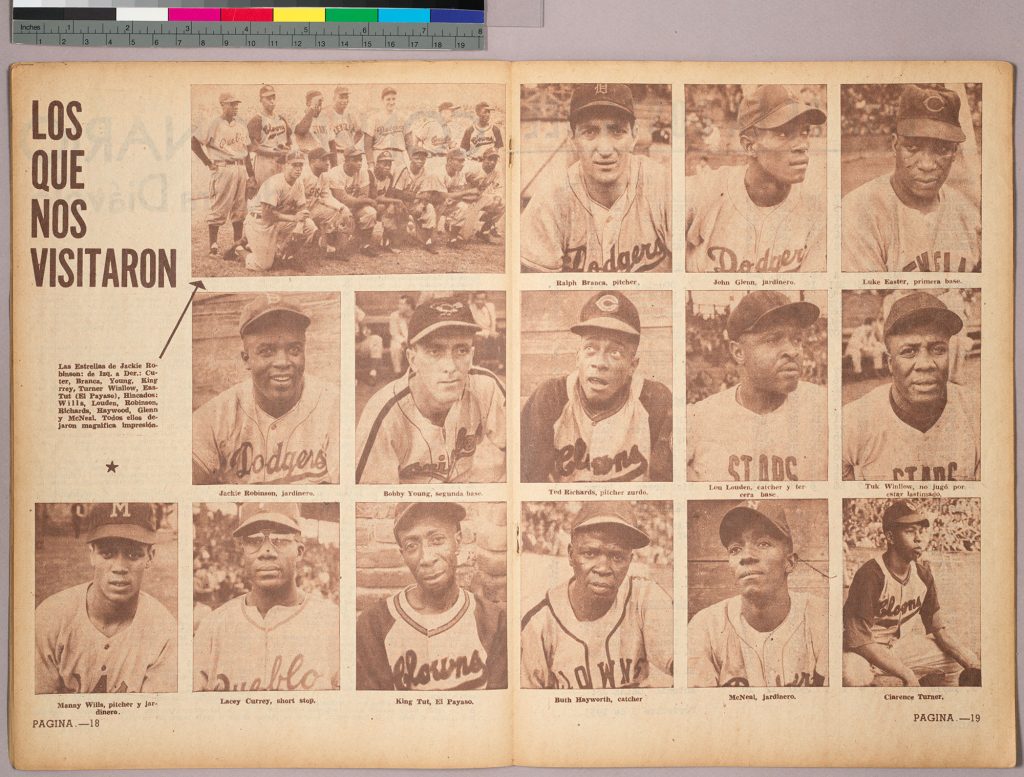
The magazine printed a two-page article “El Parque ‘Carta Clara’ Recibe Maquillaje” (“The Park ‘Carta Clara’ Receives a Makeover”) in its September 3, 1953 (pages 28-29), issue about renovations at Carta Clara Park in Mérida. The author of the article extensively interviewed the field manager/groundskeeper, Carlos “Licho” Ponce, about the changes and improvements being made to the stadium.
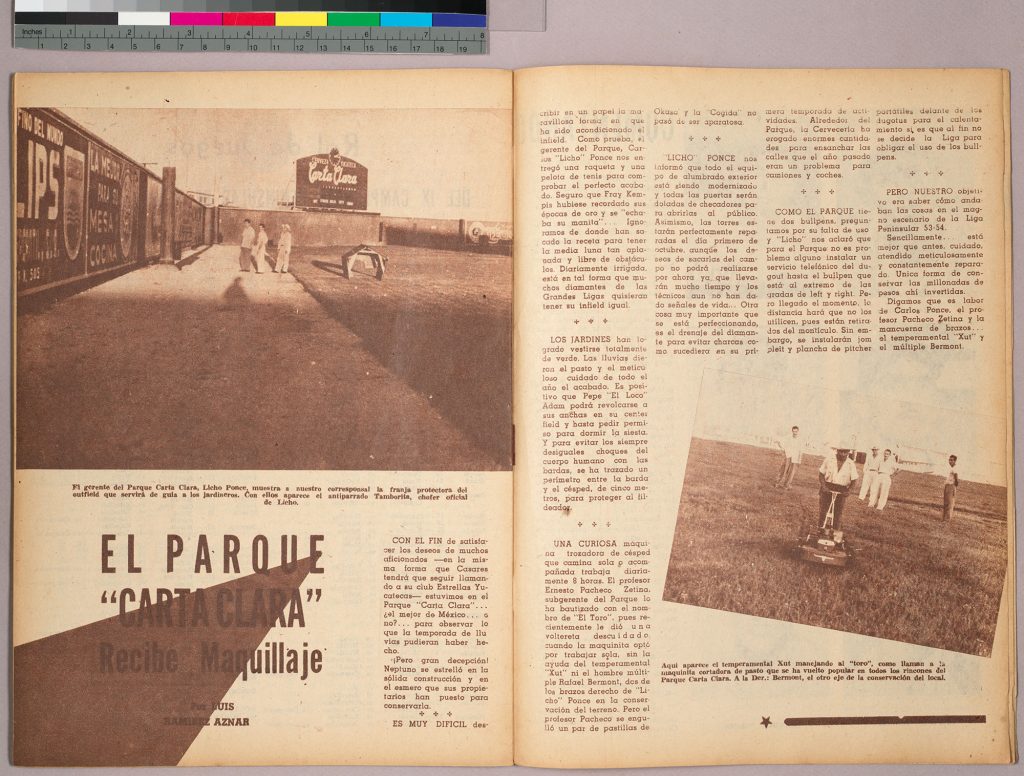
Beisbol also routinely featured a small “Sección de Softbol” (“Softball Section”). The coverage usually focused on men’s softball, but the April 8, 1954, issue included a lengthy story about a new amateur women’s softball league (that was sponsored, in part, by the Hipódromo de las Américas, a prominent Mexico City horse racing track). According to Beisbol, the organizers of the Asociación Femenil de Softbol (Women’s Softball Association):
“… han realizado una magnífica labor, llena de penalidades, para organizar este campeonato en la cual se han abierto los brazos a las jovencitas que tuviesen deseos de jugar a la pelota y no contasen con elemento para hacerlo…” (page 30).
“…have done a magnificent job, full of hardships, to organize this championship in which they have opened their arms to the young girls who had wanted to play ball and did not have the resources to do it…” (page 30).
The issue featured numerous photographs (pages 32-34) of opening day and action from the first games.
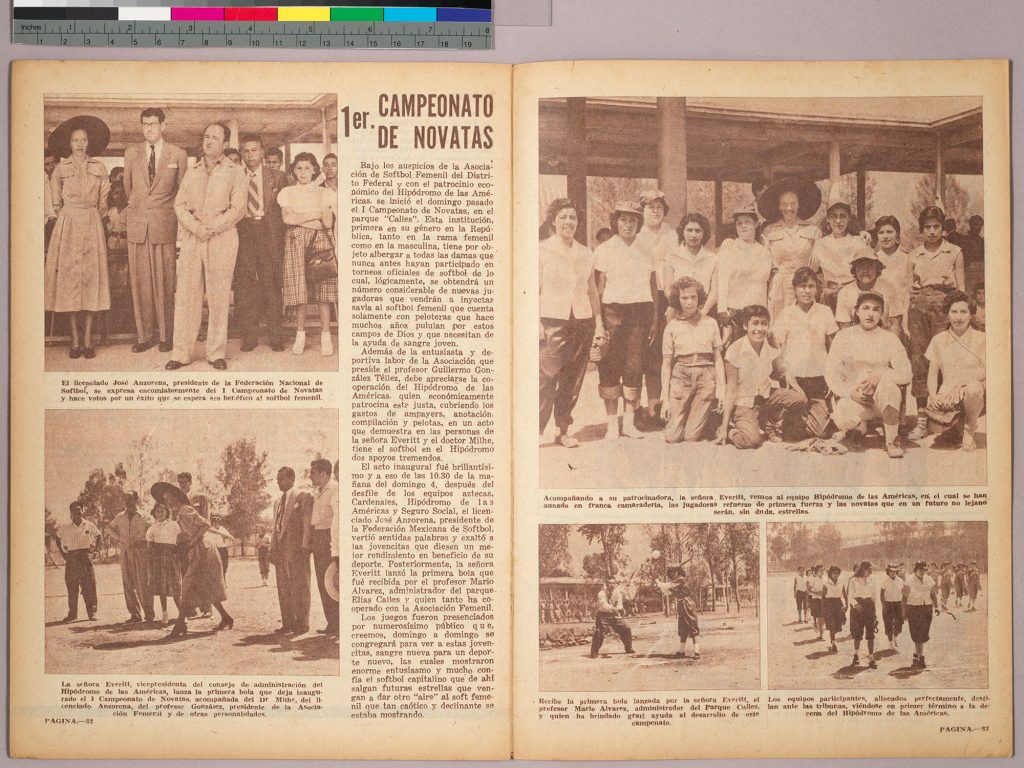
Each issue of Beisbol: Semanario Especializado featured remarkable full-color cover illustrations drawn by artist Guillermo Ley. Ley’s eye-catching images humorously commented on important current events in Mexican baseball.
The August 20, 1953, cover illustration, for example, depicted the in-season travels of Cuban pitcher Aristónico Correoso. Correoso had been released by two teams in La Liga Mexicana (Mexican League) during the 1953 season before signing with Tuneros de San Luis in La Liga Central (Central League) and leading his new team to the top of the standings.
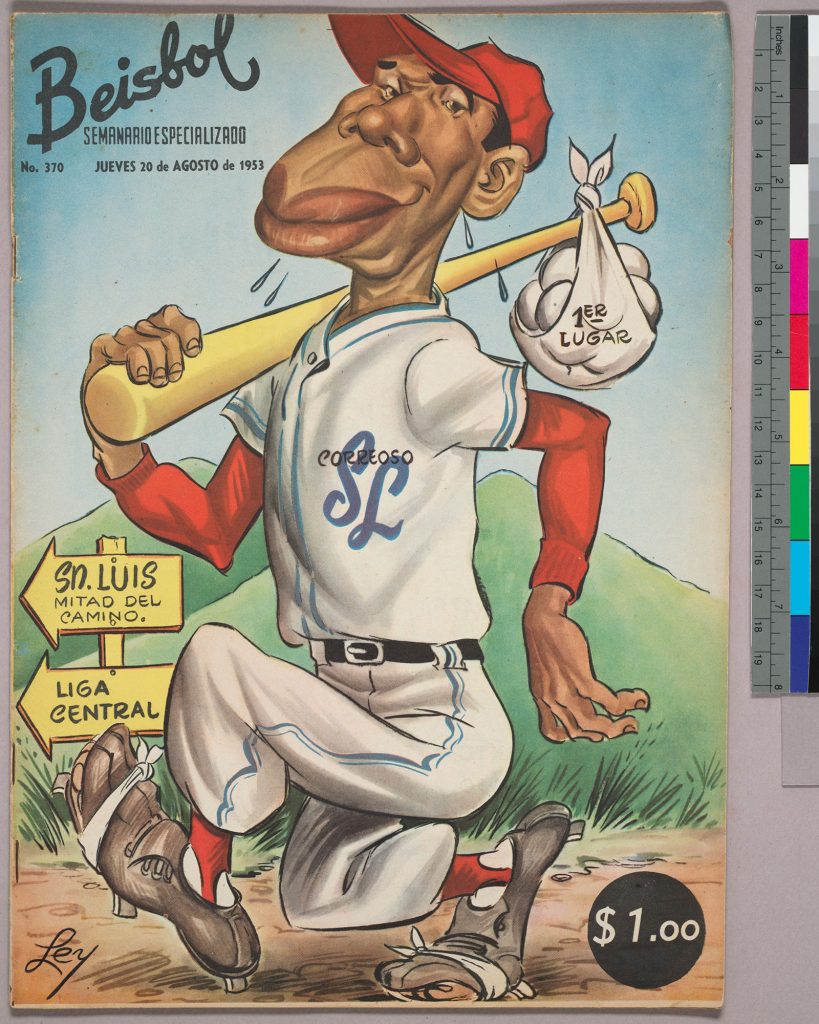
The cover of September 24, 1953, editorialized about outfielder Humberto Barbón’s recent decision to leave the Campeche Pirates of la Liga Peninsular de Yucatan (the Yucatan Peninsular League) to play for a team in Havana, Cuba. The illustration shows “el tesoro de los piratas” (“the treasure of the pirates”) waving goodbye and departing Mexico in a boat rowed by the manager of the Havana team.
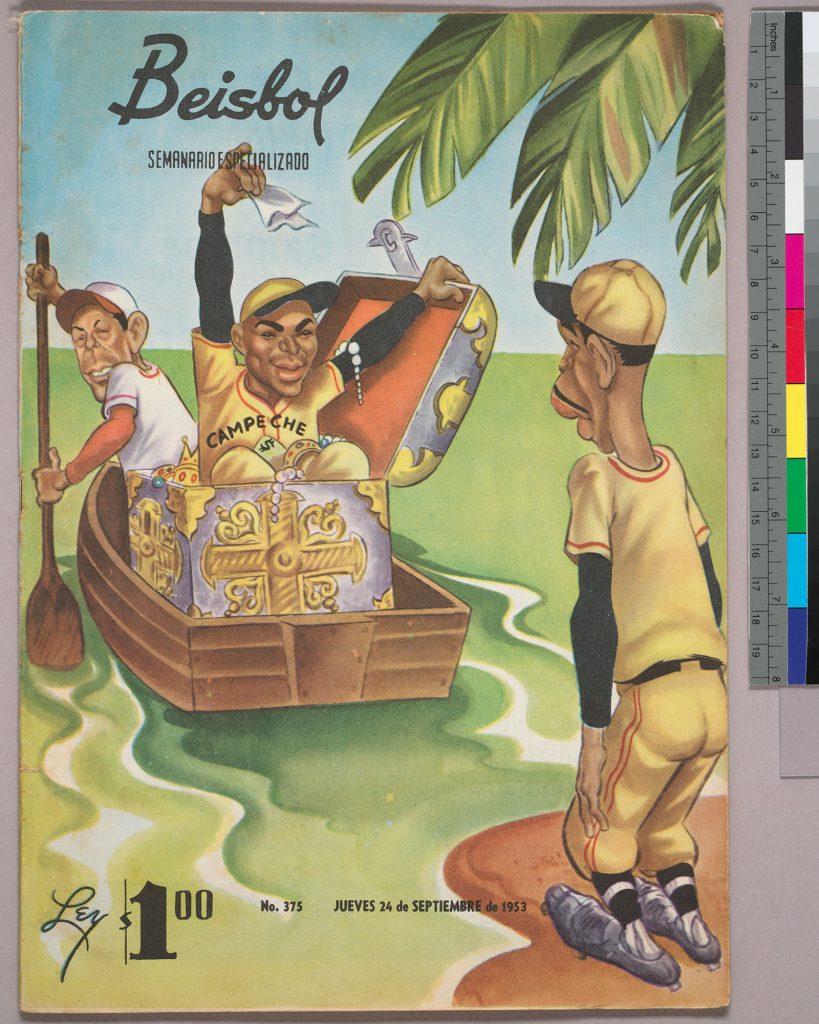
Ley’s intricate and attractive illustrations and caricatures commented on many different topics of the day and likely helped to draw readers’ attention to the magazine. On November 12, 1953, his cover illustrated the race between the six teams of the Veracruz Winter league vying for the championship, and on April 6, 1954, Ley’s cover showed underdog Venezuela bursting the Mexican team’s balloon by winning the baseball gold medal at the 1954 Central American and Caribbean Games.
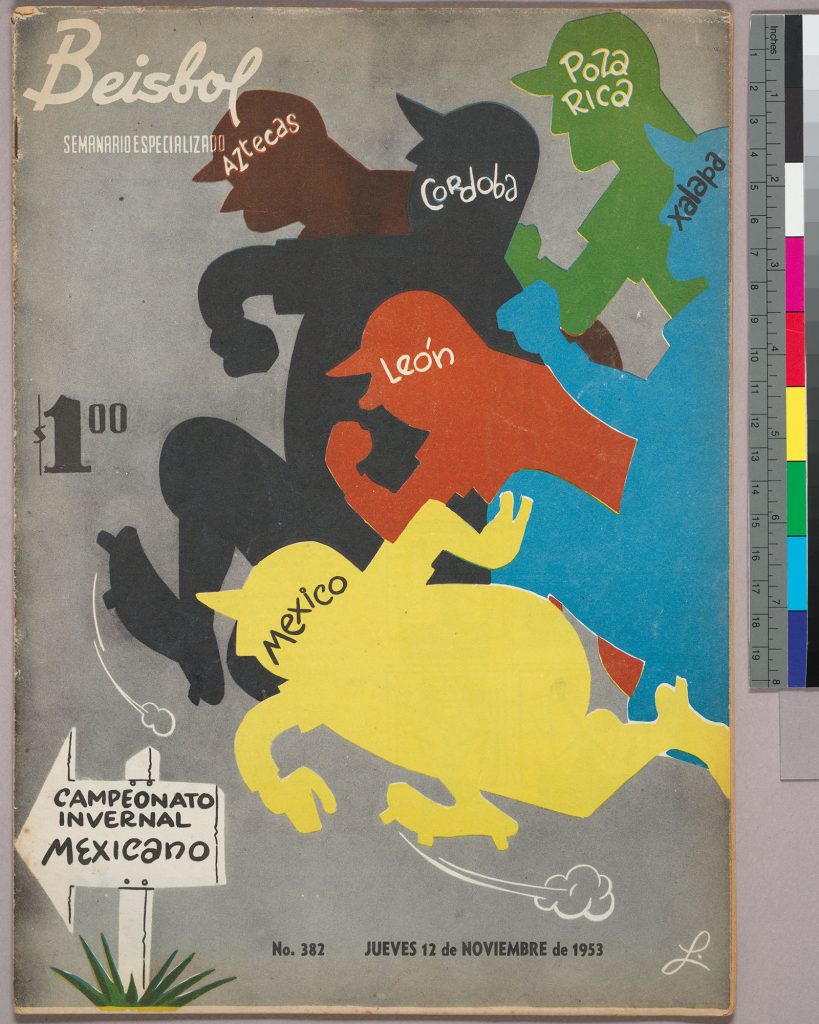
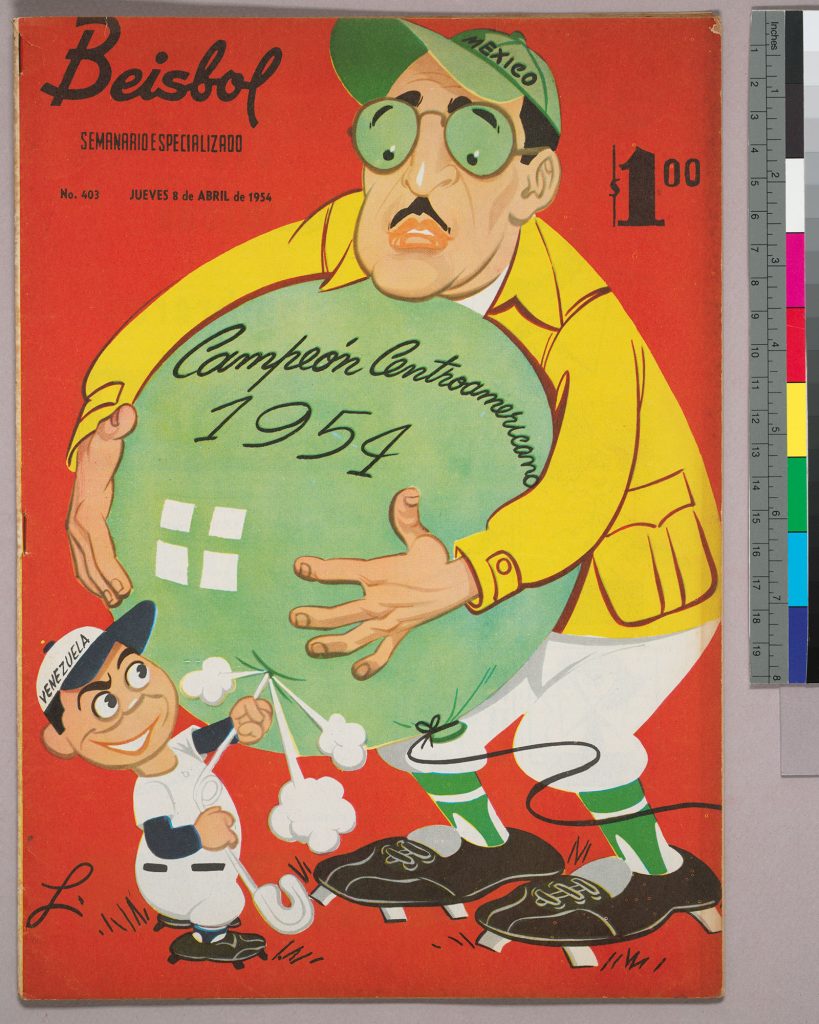
Beisbol: Semanario Especializado is an important source documenting the post-World War Two history of baseball in Mexico and throughout Spanish-speaking Latin America. These scarce issues—Worldcat finds only one other institution with any holdings of Beisbol—are open and available to researchers in Rare Books and Special Collections.
